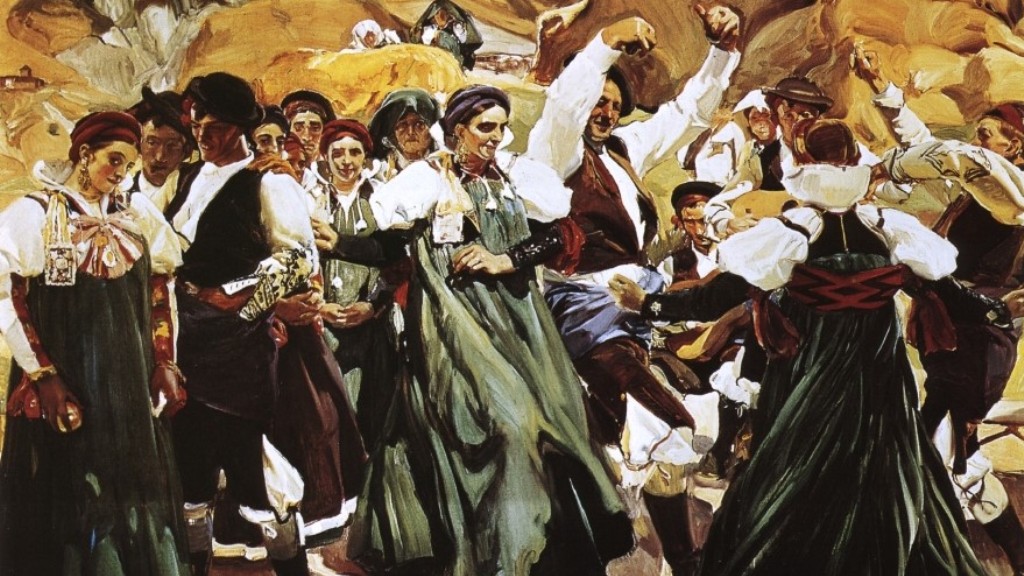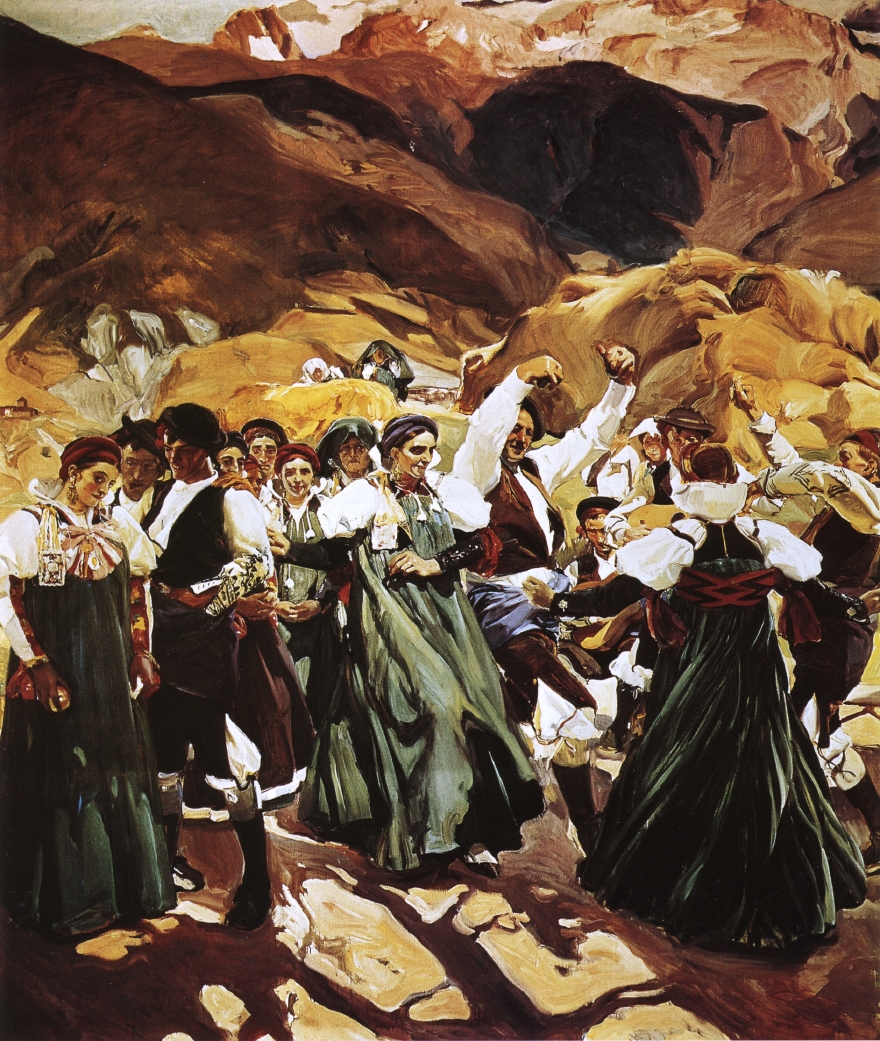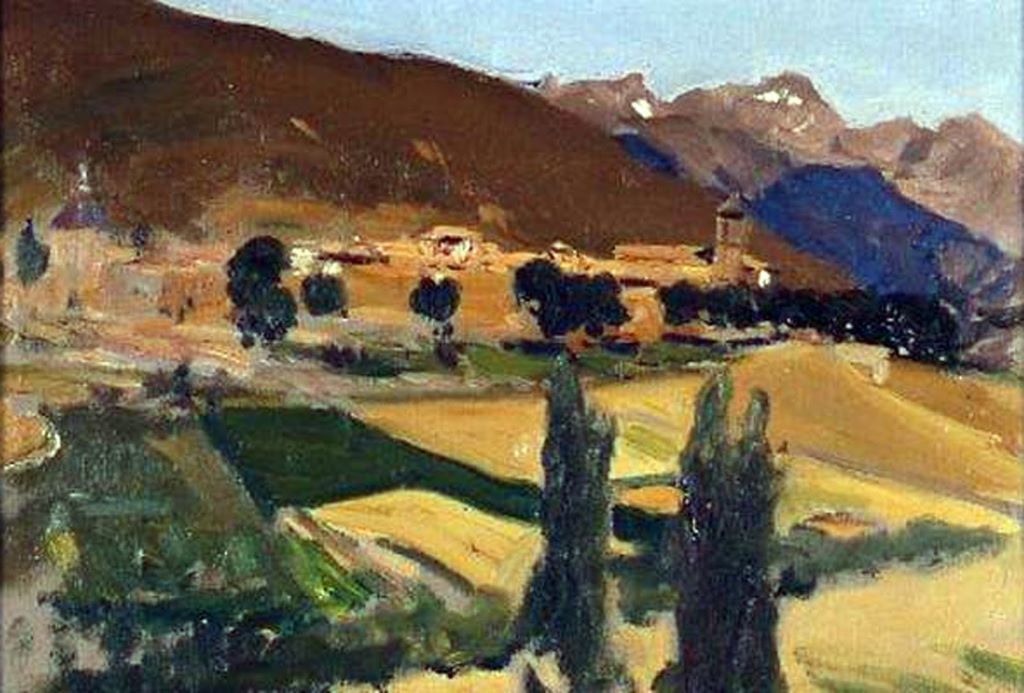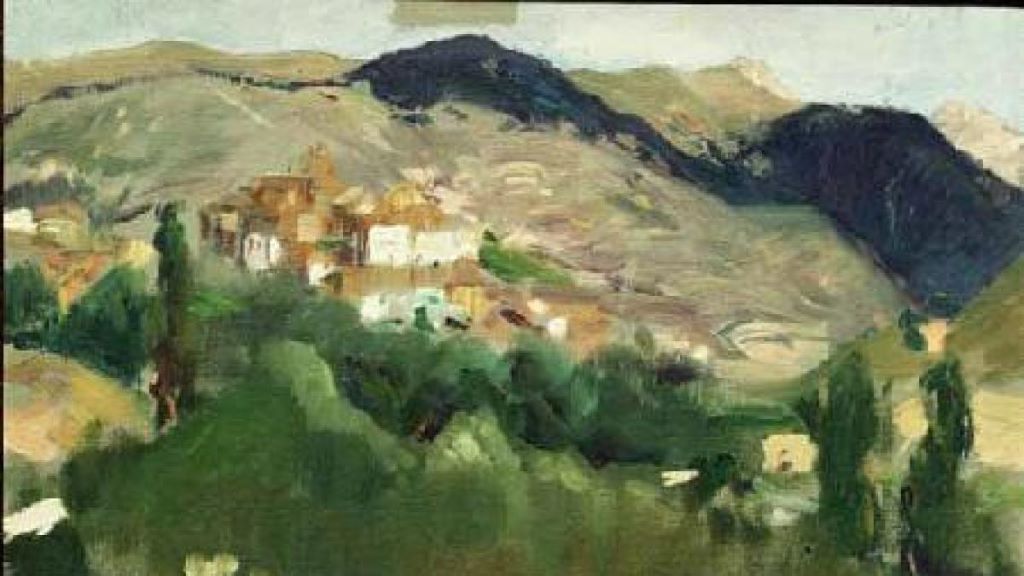
07 Oct In "Pillars" and with the help of the painter Sorolla, we highlight the value of our Jota.
Coinciding with the beginning of the Fiestas del Pilar, from the Innovation Center for Vocational Training of Aragon (CIFPA) and, specifically, from this blog dedicated to culture we want to remember a painting: Aragón, la Jota', by the Valencian painter Joaquín Sorolla.
This painting is on display at the Hispanic Society of America in New York. This institution commissioned the Valencian painter to decorate one of its rooms with paintings alluding to different regions of Spain, its landscapes and its people. To carry out the commission, a series of fourteen large-format panels painted in oil, Sorolla traveled throughout Spain in 1912, capturing images that he would later reflect in his paintings.
One of those fourteen panels of the series was dedicated to Aragon and to represent our region Sorolla chose the town of Ansó, in the Huesca Pyrenees, and focused on the traditional Ansotan costume. The painter traveled several times to Ansó to paint the canvas in which appears a group of young people dancing the jota dressed in the traditional Ansotan costume, with the Pyrenees in the background. The picture was painted in 1914 but the whole work was not finished until 1919.
Before starting this work, in 1912 Joaquín Sorolla made two studies in Ansó: Tipos aragoneses, which he was able to do in Madrid, and Tipos del Valle de Ansó, which some authors date to 1914. In a letter to his wife Clotilde, he wrote: "Ansó is admirable for painting people, so when it is time to make studies of Aragon, I will return to study it".
He returned with the whole family in August 1914. From that month and the following are the numerous drawings, sketches, photographs and studies of the surroundings of Jaca and Ansó, which served him for the final panel: Aragón, la jota. As the painter did not want to abandon his work on the paintings of Aragon and Navarre, his daughter, María Clotilde Sorolla, had to marry Francisco Pons Arnau in the Cathedral of Jaca.
While he was finishing the last panels dedicated to the Spanish people and landscapes, Sorolla began to feel ill, suffering a stroke in 1920, and could no longer take care of the placement of the works in the room for which they had been painted. In 1922 the panels traveled to New York, but it was not until 1926 that they were finally installed.
The festivities of El Pilar are, without a doubt, the best showcase for our Jota, which is in the process of being declared Intangible Cultural Heritage of Humanity by Unesco. With this small contribution we show our support to this candidacy and we wish everyone a happy holiday season.
Information obtained from:





